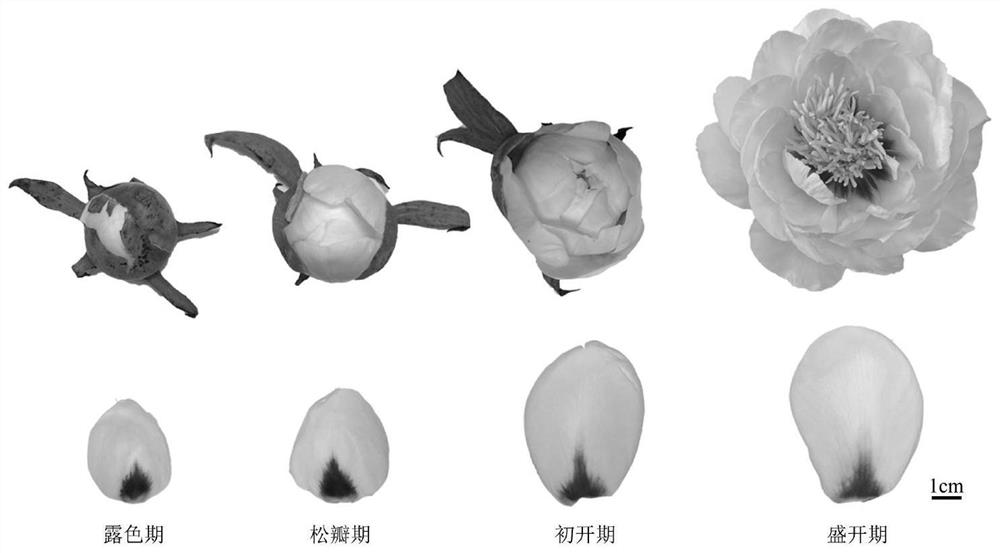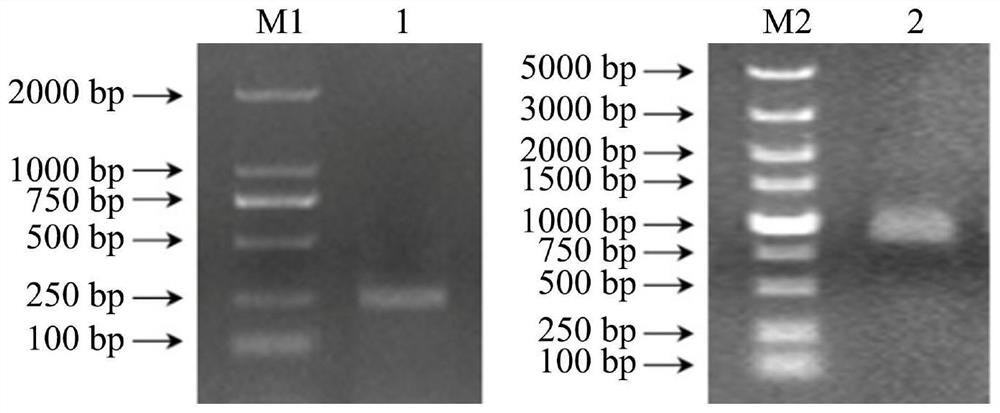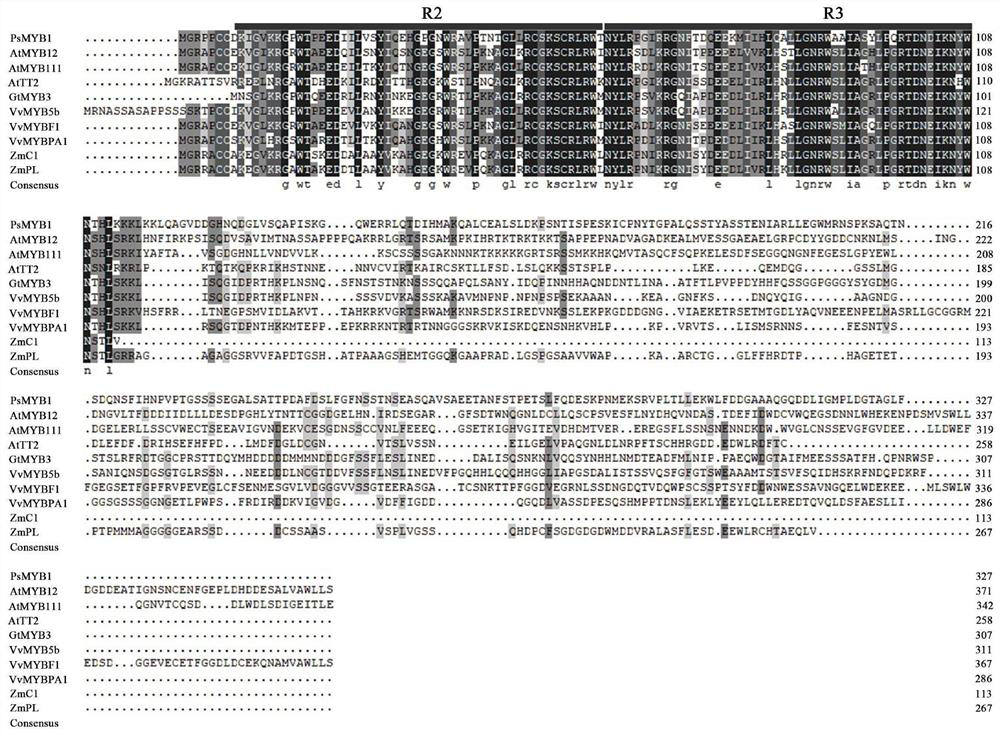Application of peony PsMYB1 gene in changing color and flower color of plant mottles
A peony and gene technology, applied in the field of plant biology, can solve the problems of MYB1 gene research that has not been reported, and achieve the effect of bright color of petals, increased expression level, and increased total anthocyanin content
- Summary
- Abstract
- Description
- Claims
- Application Information
AI Technical Summary
Problems solved by technology
Method used
Image
Examples
Embodiment 1
[0052] Example 1 Cloning of the full-length cDNA sequence of the peony PsMYB1 gene
[0053] 1. Obtaining the cDNA sequence of the 3′ end of the PsMYB1 gene: The peony variety 'Haihuang' (purchased from Heze, Shandong) was selected as the material. First, according to the change of petal shape during plant development, it was divided into 4 stages, namely dew color. stage, loose valve stage, early blooming stage and blooming stage ( figure 1 ), the mixed samples of peony petals from four periods were used as materials, and the MiniBEST Plant RNA Extraction Kit (TaKaRa) was used to extract total RNA. The first strand of cDNA was produced by reverse transcription using 3'full RACE Core Set Ver.2.0 (TaKaRa). The reverse transcription system was: 1μL RNA, 1μL 3'-RACE Adaptor, 1μL dNTP Mixture (10mM each), 2μL 5×M -MLV Buffer, 0.25μL RNase Inhibitor, 0.25μL Reverse Transcriptase M-MLV (RNase H - ), 4.5μL RNase Free ddH 2 O; reverse transcription program: reaction at 42°C for 60mi...
Embodiment 2
[0055] Example 2 Homology alignment and phylogenetic tree analysis between the predicted amino acid sequence of the peony PsMYB1 gene and the MYB protein related to anthocyanin biosynthesis
[0056] The amino acid sequence SEQ ID NO.2 of the peony 'sea yellow' PsMYB1 gene and the amino acid sequence of the MYB gene related to the anthocyanin biosynthesis pathway in other plants were saved as TXT files, and then loaded into DNAMAN5.2.2 software for the same process. source alignment, such as image 3 As shown, the peony PsMYB1 protein and other MYB proteins related to anthocyanin biosynthesis both contain R2 and R3 conserved domains at the N-terminus. Save the amino acid sequence SEQ ID NO.2 of the peony 'sea yellow' PsMYB1 gene and the amino acid sequence of the R2R3-MYB gene related to the anthocyanin biosynthesis pathway in other plants as TXT files, and then load them into MEGA 7.0 software, The phylogenetic tree was constructed by the neighbor joining method, and Bootstra...
Embodiment 3
[0057] Example 3 Expression of peony PsMYB1 gene silencing vector in peony petals
[0058] 1. Construction of peony PsMYB1 gene silencing vector: Design primers containing enzyme cleavage sites Xba I and BamH I for amplifying PsMYB1-specific sequences (upstream primer: 5'-AAGGTTACCGAATTCTCTAGAACGGATACCAGGCCGGAG-3' (SEQ ID NO.6), downstream Primer: 5'-CGTGAGCTCGGTACCGGATCCATGGGTAGACCACCTTGCTGTG-3' (SEQ ID NO. 7)). PCR amplification system: 12.5 μL 2×Phanta Flash Master Mix (Vazyme), 1 μL ForwardPrimer, 1 μL Reverse Primer, 2 μL cDNA template containing PsMYB1 gene in Example 1, 8.5 μL ddH 2 O. Reaction program: pre-denaturation at 98°C for 30s; denaturation at 98°C for 10s, annealing at 60°C for 5s, extension at 72°C for 5s, a total of 35 cycles; extension at 72°C for 1 min. After the reaction, the PCR reaction solution was analyzed by agarose gel electrophoresis, and the PsMYB1-specific fragment containing the restriction site was recovered by TSP601-DNA gel recovery kit (Ts...
PUM
 Login to View More
Login to View More Abstract
Description
Claims
Application Information
 Login to View More
Login to View More - R&D
- Intellectual Property
- Life Sciences
- Materials
- Tech Scout
- Unparalleled Data Quality
- Higher Quality Content
- 60% Fewer Hallucinations
Browse by: Latest US Patents, China's latest patents, Technical Efficacy Thesaurus, Application Domain, Technology Topic, Popular Technical Reports.
© 2025 PatSnap. All rights reserved.Legal|Privacy policy|Modern Slavery Act Transparency Statement|Sitemap|About US| Contact US: help@patsnap.com



